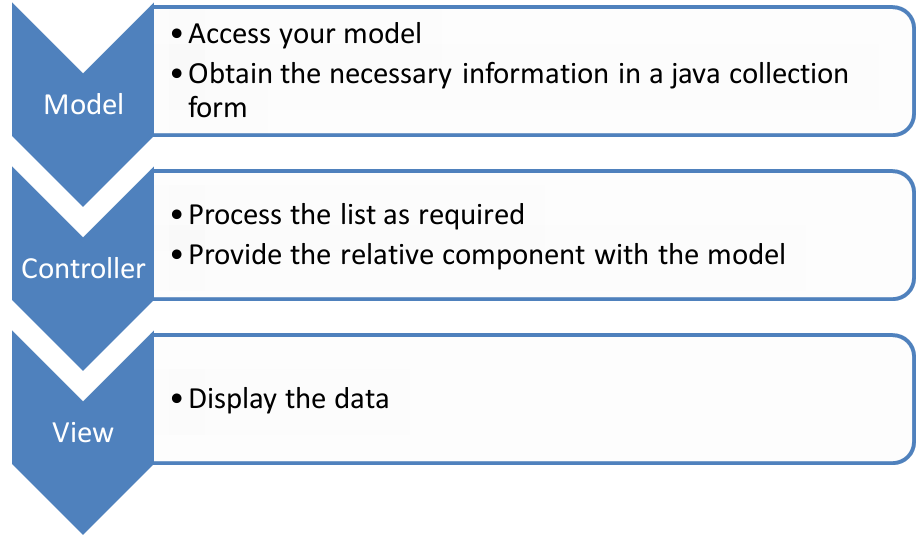The Theory of Using ZK with Databases
![]() This article is out of date, please refer to http://books.zkoss.org/zkessentials-book/master/ for more up to date information.
This article is out of date, please refer to http://books.zkoss.org/zkessentials-book/master/ for more up to date information.
ZK is predominantly a server centric framework thus developers are not required to leverage any special mechanism to transfer data from the server to the client as this is all taken care of by ZK.
Fundamentally, as discussed in previous sections, data is provided to the view using a model concept, which is a collection type. For detailed information please click here.
The sequence of displaying the data in the view is shown below.
With ZK handling the transfer of data to the client the process is substantially easier for us as developers. A ZK developer is able to leverage any application or ORM framework such as Spring and Hibernate respectively without needing to perform any special task.
If you are familiar with Hibernate you do not need to read any further as the Java Collection of object which an ORM framework such as Hibernate will provide you with can be used in a ZK based application using the knowledge we gained from previous sections.
For developers who are not familiar with Hibernate the following sections provide a simple tutorial on refactoring our current application so it uses a database rather than an in memory model provided statically in the DAOs.
